
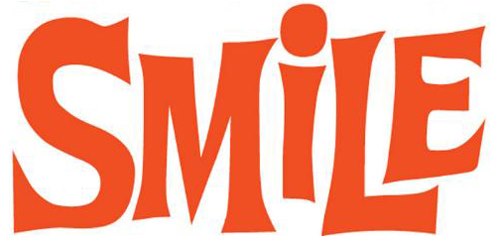



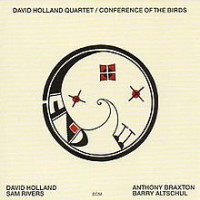
This is not an ordinary record in any respect. Free jazz and the 1960s avant-garde had ironically generated its own conventions. Conference of the Birds ignores them and sets up its own outstanding performance standards for both individual voices and ensemble. The compositions are all Holland’s, inspired by the dawn chorus outside his flat in London in the early summer mornings.
The first theme, “Four Winds” is a delightful opener, marked by Holland’s characteristic firm, precise fingering. The bass immediately sets the atmosphere of the record: a light, free dance of notes. Holland’s bouncing fingering sharply contrasts with Barry Altschul’s fizzing cymbals. Sam Rivers and Anthony Braxton converse almost indistinguishably, politely exchanging commentary. On “Q & A” Altschul converses with himself, quietly alerting his companions, who gradually make their appearance with little interjections. These fragments progressively accumulate to form a kind of dance of free individuals, like birds pecking at grain, each jumping according to its own whim, chasing its morsel. Then, the title-tune, “Conference of the Birds”; It’s one of the great compositions of jazz, perhaps the most distinctive and memorable 1970s original (in retrospect, an accolade it should probably share with Weather Report’s “Birdland”, released four years later). It is a delicate, contemplative song to beauty and quietude, both melancholy and uplifting, evocative of both aching loneliness and the intimacy of companionship. Holland’s double bass figure must be one of his most celebrated. Altschul’s marimba is divine in its simplicity, accompanied by the plain, unadorned flutes of Braxton and Rivers. “Conference of the Birds” is almost like the calm before the storm – the track that follows it, “Interception”, is a wild, intense vehicle for each soloist to give free rein to his passions. This is followed by “Now Here (Nowhere)”, the most spacious of all six pieces. It offers a cautious reconciliation to dissenting voices after “Interception”, underscored with the ubiquitous bass. Holland cultivates a tone here honed into a ovoid, sculpted sound with a hint of vibrato. Finally, on “See-Saw”, we have Altschul again creating a effervescent ambience to a blistering Rivers solo. This is the final climax to an awesome, astonishing album, one of the great classics of the post-free era. —Ricard
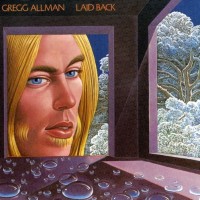
With The Allman Brothers Band tearing up the charts, it was probably only natural that Gregg Allman would have wanted to test his own capabilities by taking a stab at a solo career. Though he’d apparently started recording the album shortly after brother Duane’s death, it took more than two years for Allman to complete the effort. Produced by Johnny Sandlin, musically 1973’s “Laid Back” was a modest surprise in that it showcased a set that was far more diverse than his blues-rock repertoire with The Allman Brothers. In fact, anyone expecting to hear blistering, twin lead guitar Southern rock was going to be left scratching their heads. Mind you, Allman’s voice remained instantly recognizable, though his patented Hammond B3 organ was largely absent from the proceedings. And that’s where the similarities ended. While you couldn’t label this a pop album, it’s hard to imagine the Allman Brothers recording anything with intricate orchestral arrangements like ‘Multi-Colored Lady’ or ‘All My Friends’. Similarly, the upbeat cover of Oliver Sain’s ‘Don’t Mess Up A Good Thing’ was a far cry from The Allman Brothers patented driving rock genre. One other comment, with the exception of the Oliver Sain cover, virtually the entire set was soaked in a sense of loss and sadness.
Side one’s biggest surprise came in the form of Allman’s bouncy cover of Sain’s ‘Don’t Mess Up A Good Thing’. I’d be hard pressed to pick another song where he sounded as happy and pleased with himself. It would have made a great single.
The thought of Allman doing a Jackson Browne cover set off alarm bells in my head (damaged Southern rocker covers damaged West Coast singer/songwriter), but the concerns were unwarranted given Allman turned in a cover of These Days that was beautiful and aching and mournful slice of self-doubt and regret. The performance stood as a highlight across Allman’s entire career and simply beat the crap out of Browne’s own version.
Backed my strong reviews and an extensive American tour (documented for his next release), the album sold well, peaking at # 14 on the US charts. All told, probably still my favorite Allman solo venture. —Scott
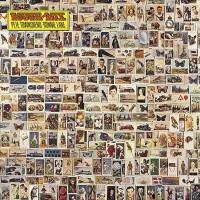
This would be ex-Faces Ronnie Lane’s next-to-last record. (He would release only one more solo album, 1979’s See Me, before multiple sclerosis no longer permitted him to record.) Together with Pete Townshend they create a memorable album.
Rough Mix kicks off with the most Who-like of the albums tracks–“My Baby Gives It Away,” which is propelled by the drumming of Stones’ drummer Charlie Watts. Townshend’s vocal performance is fine, but he doesn’t have the instensity that Roger Daltry could have added to the song. Only two other tracks rock as hard as the opening track. The instrumental “Rough Mix,” which features Eric Clapton’s lead guitar and the organ work of John “Rabbit” Bundrick, who would go on to tour with the Who in 1979. The other is Ronnie Lane’s “Catmelody,” a jumping number featuring Stones sideman Ian Stewart on piano.
The rest of the album is a mostly accoustic affair. One of the album’s many standout tracks is Lane’s absolutely gorgeous “Annie,” which features his former Slim Chance members Graham Lyle on guitar and Benny Gallagher on accordian. Equally lovely is Lane’s “April Fool” with Clapton on Dobro. Townshend also turns in one of his prettiest melodies and excellent acoustic guitar playing with “Keep Me Turning.” The album closes with the melancholy “Heart to Hang on To” with Lane and Townshend sharing vocal chores, and the Don Williams country classic “Till the Rivers All Run Dry.”
This is one of Townsend’s strongest non-Who projects and Lane’s contributions are stunning. If you enjoy either of these artists you will enjoy this collaboration. Highly Recommended! —Steve
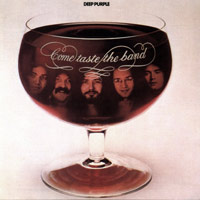
With Blackmore off chasing Rainbows, Deep Purple finally get a grip on this whole hard-funkin’ thing that had been brewing since Burn. Unlike the past two MKIII efforts, every track on Come Taste the Band (save for the snowblind ballad “This Time Around”) is seriously steeped in heavy groove, and it’s this consistency that makes the album work. There are no throwaways, every song purposefully jammin’ up a storm, the road weary “Comin’ Home,” high-rollin’ duo of “Lady Luck” and “Dealer,” and Hughes led party rocker “Gettin’ Tighter,” all notables. Personal favorite here though is the monolithic “Love Child,” with it’s syrupy, leaden riff, it’s a devastating highlight. Heck, even new kid Tommy Bolin serves up a cool instrumental cut in “Owed to ‘G’,” his adventurous Strat-strangulation and deft slide work a perfect fit for this one-off album. Come Taste the Band just oozes power and life start to finish, and shouldn’t be written off due to it’s distance from the classic Deep Purple sound. —Ben
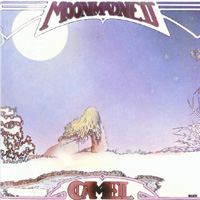
After something of a detour in the all-instrumental Snow Goose, with Moonmadness Camel deliver a song oriented but no less progressive album that houses a faultless set exhibiting their impossibly relaxed and warm sound operating at a peak, as in the dual nature of “Song Within A Song” or the floating “Air Born,” songs which are comfortable, focused, and confident in their identity. Andy Latimer really steps to the front with a zen-like, effortlessly expressive guitar style that melts stone with it’s sheer beauty, fingers connected to the heart as well as the head, be it on softer passages such as in “Chord Change” or the full-bodied howling that closes “Another Night,” while the instrumental finale “Lunar Sea” simply blows the doors down with it’s twisting interplay and powerful lead work. One cannot discount the contribution of the rest of the band as well, Bardens with his most colorful pallet of synthesizer sounds, Ferguson and Ward totally in tandem, laying down syncopated grooves that help drive this one to the top of the heap. Moonmadness is an ideal place to start a Camel journey, not just in the merit of the individual songs but in the fact that Camel’s essence is so tangible here, looking forward or backward in their discography there’s a bit of Moonmadness everywhere. —Ben
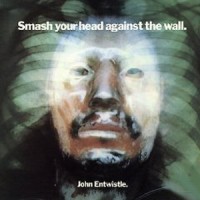
John Entwistle’s first solo project away from The Who, “Smash Your Head Against the Wall,” comes as a revelation of sorts; while his songs had been sporadically featured on Who albums up until its release, Entwistle wasn’t quite given the songwriting kudos he deserved (his bass playing certainly wasn’t an issue!) This album changed THAT notion, for sure..;) It’s 100% solid, and a lot darker than the contemporary “Who’s Next;” in fact, just imagine 9 songs of the general spirit of “My Wife,” and you’ve got yourself an idea of what this album contains subject-wise.h
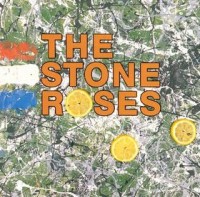
It still amazes me to this day how four young lads from Manchester somehow managed to come together and make such a bold statement of an album, and bring a new movement kicking and screaming into the public consciousness. Enter The Stone Roses with their self-titled debut. It starts with some random industrial noises before suddenly, Mani comes in with a heavy, prolific baseline, John Squire provides an jangly intricate passage himself, as they build up to something monumental. Then suddenly those two drum beats from Reni hit. And that riff starts. You know you’re in for a ride from the beginning. “I Wanna Be Adored” is one hell of an opener to this statement.
One misgiving that many have with this band is the the gruff, out of tune voice of Ian Brown. Brown’s voice, while not technically perfect, embodies a cocky, swaggering personality and adds it over the album, which consists of 11 excellent jangly pop songs with influences from the 60’s. There are so many wonderful moments, the bassline of “She Bangs The Drums”, the jangly guitar line of “Waterfall” and the uplifting choruses of “(Song For My) Sugar Spun Sister”, the intro to “Made Of Stone”, and the tempo change in “This Is The One”.
But the band save the best till last with the epic closer “I Am The Resurrection”, the song is effectively a two parter, the first part yet another excellent jangly pop song like the rest of the album, but just as the song is about to finish, Mani’s bass becomes just that little funkier, and suddenly a five minute dance jam proceeds between the three instrument playing members, which effectively signals the breakthrough of Madchester into the public consciousness and re-emergence of Manchester on the musical map after the breakup of The Smiths. It is the moment that cements this as one of the essential albums of the late 1980s. —Mouzone
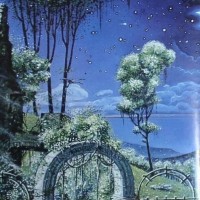
The self-titled debut from this New York group Masters of Reality (1988) traverses between Black Sabbath (hence the title), Cream and AC/DC with a touch of the Doors and Beatlesque wit. Produced by studio marvel Rick Rubin and some additional help from founder/vocalist/guitarist Chris Goss, this is one the most creative rock records of the eighties. While it garnered some success on college radio it never really rose above cult status. Three years prior to the release of Nirvana’s Nevermind, bands like REM were already beginning to usher in a welcome change from the hair spray and glitter metal of the eighties with jangly guitars and folk sensitivity delivered with a punk rock aesthetic . Masters of Reality were responding to the bloated extravagance with a record full of bluesy psychedelic embellishments by crafting hefty guitar riffs, some refined piano/organ passages along with Goss’ sultry voice-who sounds like a cross between Jack Bruce and Jim Morrison.
The songs, all penned by Goss and guitarist Tim Harrington, contain varying subject matter ranging from hookers (The Candy Song) to hippy giddiness (Getting’ High) alongside the stream of conscious (Doraldina’s Prophecies). In addition to Goss/Harrington’s clever songwriting, they have a cohesive band
to set the words in motion. There’s the swampy steel string slide opening to the electro-folk anthem (John Brown), some fuzzy blues licks on another cut (Sleepwalkin’) and a jump blues acoustic number (Lookin’ Too Get Right). There’s also an ominous, almost doom metal guitar interlude tucked in the middle of the record (Theme for the Scientist of the Invisible). Another high point is the classical piano intro that leads into the heavy prog leanings of the album’s closer (Kill the King). There are plenty of other gems on this record as well; all mixed with quirky pop structures mingled with obscure lyrics and some serious rock-n-roll making this record a misplaced archetype. –ECM Tim

Perfect fusion of the spacey Canterbury progressive jazz-rock typical of bands like Khan, National Health and Gong with a distinctive focus on Hillage’s ridiculous guitar skills. It takes a few minutes to warm up, but goddamn this album is like a gloriously hypnotic 40+ minute guitar solo. Don’t be mistaken, though–there’s a fair helping of pop sensibility, a little songcraft and some good vocals (provided you enjoy Hillage’s voice). This album has become an all-time personal favorite of mine, and unfortunately I think it’s unmatched in Hillage’s discography–his more song-oriented later albums feature some excellent guitar playing and some interesting ideas, but they’re often bogged down by less endearing new-agey lyrics, some of the guitar ideas start to reappear over and over, and the synths have dated in a way that’s much less attractive to my ears than this album (which, to be fair, is obviously from the mid-70’s). Love the inclusion of David L. Stewart and Lindsay Cooper–a couple of my favorite other Canterbury luminaries. Heavily recommended. —Elliot
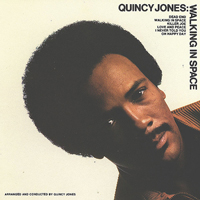
After a few year period of releasing film scores in the mid sixties, Jones entered the studio and recorded Walking in Space (1969); an electric/acoustic/ jazz/funk/big band record produced by his friend, the great Creed Taylor of CTI records. With jazz luminaries Roland Kirk, Freddie Hubbard and Ray Brown (and a few other heavy hitters of the time), Jones conducts, arranges, and rearranges a handful of tunes from the stage along with some standards.
Side one is made up of two tracks from the Broadway hit “Hair” (Dead End, Walking In Space) funked up with swagger and velvet shag. The record begins with Ray Brown’s walking bass settin’ it along with some electric piano chiming it up and rim shots galore- some muted trumpet and flute phrases establish a simmering melody, then the brass section enters along with some electric guitar jabbing from Eric Gale. The title track begins similarly; Hubbard breaths more muted sounds from his horn while Roland Kirk’s tenor slithers around it only this time it lasts a bit longer as a female vocal section sneaks in giving the track a swanky lounge vibe. As the tempo increases, Hubert Laws cuts through with a whispery flute solo eventually giving way to some muscular statements from Eric Gale and Roland Kirk- a standout number.
Side two begins with a cool rendition of Benny Goldson’s “Killer Joe” (some feel this is thee rendition). Hubbard blows his muted trumpet over a medium sized brass section with some understated guitar fills throughout, more sexy vocals come in and sing the chorus – imagine if Ellington’s orchestra were to cover Miles’ “So What” with a plugged in rhythm section and the backup singers from Sergio Mendes’ Brazil ’66-you get the idea. Another highlight is from Toots Theilmans, who shows up with harmonica in hand for a fractured and somewhat abstract harmonica solo on one track (I Never Told You). The Album closes with an eighteenth century gospel standard (Oh Happy Day). A gospel choir sings the chorus while Hubert Laws answers the vocal phrases with his flute; you also get the rarity to hear Ray Brown really get down on electric bass on this cut.
Jones created some probing instrumental music on Walking In Space. Supported by a cast of stellar musicians-from the grooves to the smooth backbeats it was an absolute perfect fit for Taylor’s slick productions and definitely one of the strongest records in the CTI catalog. – ECM Tim
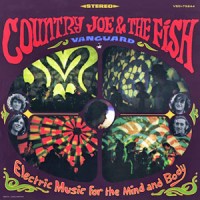
Electric Music is perhaps the greatest psychedelic album of all time. Different aspects of the psychedelic experience are represented here from the crazed caotic energy of “Superbird”, the deeply meditative and stoned “Bass Strings”, the soulfully flowing “Section 43”, to the sheer fun of this album. During a psychedelic experience, one is often able to percieve or rather hear colors in music. Electric music is replete with them and examples can be found on the organ solo of “Love” to Barry Melton’s guitar solo on “The Masked Marauder”. The mix of different tones on this album has been seldom paralled especially in the digital ninties. Chicken Hirsh’s resonant tom tom drums, Bruce Barthol’s rich bass, David Cohen milky organ and Barry Melton’s guitar provide a nice rich timbre palete throughout the album particular evident on the instrumentals “Section 43” and “The! Masked Marauder”. Barry Melton’s vocals on “Love” sound like Satchmo on acid and add to the fun of this masterpiece. Country Joe once told me that the songs were arranged so that you would forget the tune you just hear before the one you were hearing. He also said that the band “tested” the album out themselves. Now if that’s not quality control I don’t know what is. An analog masterpiece for those curious to know what music sounded like before the digital age. A high recommend! —AC